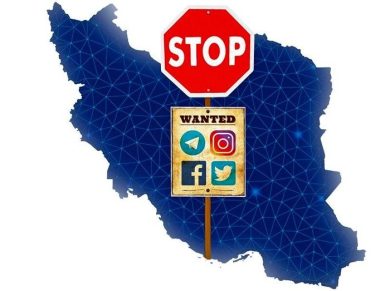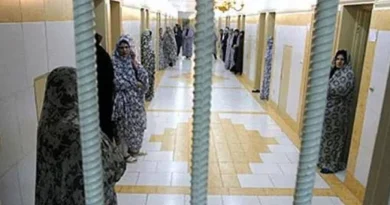The uprising led by Iranian women in recent years has marked a historic turning point—not just within Iran but across the world. What began as personal acts of resistance has evolved into a nationwide movement, empowered not just by physical presence in the streets, but by a digital revolution. At the center of this transformation is social media.
With platforms like Instagram, Twitter (X), and Telegram, Iranian women have harnessed technology to expose oppression, organize protests, and challenge the regime’s narrative. From hashtags like #MahsaAmini and #WomenLifeFreedom to viral videos showing women removing their hijabs in public, social media has given Iran’s women a voice the regime cannot easily silence.
This article explores how social media has become the most powerful tool in Iran’s women-led movement, analyzing its impact, challenges, and potential to drive real change.
1. The Rise of Digital Resistance in Iran
A. Mahsa Amini and the Spark of a Movement
In September 2022, the death of 22-year-old Mahsa Amini at the hands of Iran’s “morality police” ignited global outrage. Her name became a hashtag—#MahsaAmini—that trended worldwide within hours. Her death symbolized decades of systemic repression of women in Iran, particularly over compulsory hijab laws.
What made this moment different was the speed and scale of the response, made possible through social media. In a matter of days:
• Protest videos flooded Instagram and Twitter.
• Iranian citizens coordinated protests using encrypted apps.
• Hashtags reached millions globally, creating international pressure.
B. The Evolution of Hashtag Activism
Hashtags like:
• #WomenLifeFreedom
• #IranProtests
• #FreeIranianWomen
…have become digital banners of resistance. These campaigns have evolved beyond slogans—they’re tools for organizing, documenting, and spreading awareness.
2. Social Media as a Tool for Organizing
A. Mobilizing Protests
In a country where protests are met with brutal force, social media offers a safer space (albeit still risky) to:
• Share protest locations and schedules.
• Warn about police crackdowns and safe escape routes.
• Form solidarity networks across cities and provinces.
Despite heavy internet censorship, many Iranians use VPNs and satellite connections to remain connected.
B. Bypassing State Media
Iranian state media often spreads disinformation, presenting protesters as foreign agents or criminals. Social media allows people to share:
• Real-time videos of police brutality.
• Testimonies from families of political prisoners.
• Citizen journalism that counters regime propaganda.
This decentralized form of reporting has become vital for global media outlets covering events inside Iran.
3. Empowering Women’s Voices
A. Personal Acts of Defiance Become Global Symbols
Social media has turned individual acts of protest—a woman removing her hijab, dancing in the street, or cutting her hair—into viral images of defiance.
These moments:
• Inspire others within Iran to join the movement.
• Attract global solidarity, including from feminist movements and celebrities.
• Shift the global narrative from Iran as a closed-off regime to one in active resistance.
B. Influencers and Activists in Exile
Figures like Masih Alinejad, an exiled Iranian journalist and activist, use social media to:
• Share videos from inside Iran.
• Campaign for the release of political prisoners.
• Organize global protests and pressure campaigns.
She launched the #MyStealthyFreedom movement, encouraging Iranian women to post photos without the hijab—an act punishable by law inside Iran.
4. Social Media vs. The IRGC: A Battle for the Narrative
A. Regime’s Digital Crackdown
The IRGC’s Cyber Unit actively monitors social media and has implemented:
• Mass arrests for sharing protest content.
• Dozens of internet blackouts to block communication.
• Surveillance and hacking campaigns against activists.
Despite this, content keeps flowing out of Iran—showing the power of decentralization and digital courage.
B. IRGC’s Propaganda Campaigns
The regime also fights back with:
• Fake accounts spreading misinformation.
• Bots and trolls discrediting protest narratives.
• State-sponsored videos portraying protesters as terrorists.
However, digital literacy among younger Iranians, especially Generation Z, is high. They’ve learned to recognize and report false content, outsmarting censorship at every turn.
5. The Role of Generation Z
Born after the 2000s, Iran’s Generation Z is tech-savvy, fearless, and politically aware. They:
• Lead protests, document them, and post content within minutes.
• Create memes, art, and music to support the movement.
• Use platforms like TikTok and Instagram to raise awareness among youth globally.
This generation sees digital expression as an extension of political resistance—blending activism with creativity in revolutionary ways.
6. Global Impact of Iran’s Hashtag Movement
A. International Solidarity
Social media has helped the world understand what’s happening in Iran. As a result:
• Protests erupted in cities like Berlin, Toronto, New York, and Sydney.
• Hashtags trended globally, including #MahsaAmini and #WomenLifeFreedom.
• The UN, EU, and NGOs have cited social media posts in their reports on human rights violations.
B. Policy Changes and Recognition
Thanks to public pressure:
• Sanctions were imposed on Iranian officials.
• Narges Mohammadi, a jailed activist, was awarded the Nobel Peace Prize.
• Global media began prioritizing Iran’s women-led struggle.
7. The Challenges of Digital Resistance
Despite its power, social media activism faces real threats:
• Online harassment of female activists.
• Account suspensions due to content moderation algorithms misunderstanding context.
• VPN and app bans, making access harder for users in Iran.
• Fatigue and censorship diminishing global visibility over time.
Still, activists continue to adapt, switching platforms, sharing tools, and educating others.
8. How the World Can Support
A. Follow and Share
• Amplify voices from Iran.
• Follow Iranian activists, artists, and journalists on social media.
• Share credible, verified content with global audiences.
B. Pressure Tech Companies
• Push for platform protections for activists in authoritarian states.
• Urge companies to resist government takedown requests that target human rights content.
C. Provide Tools for Access
• Donate or fund access to VPNs, proxy tools, and digital security training.
• Encourage development of apps that are secure, encrypted, and censorship-resistant.
9. The Future: From Hashtags to Real Change
Hashtag activism alone is not enough, but it is a starting point—a megaphone for those without one. It transforms:
• Personal pain into global protest.
• Local struggles into international pressure.
• Moments into movements.
Iranian women, armed with smartphones and courage, have shown the world that hashtags can lead to headlines, and headlines can lead to accountability.
Conclusion
From the viral photo of a young woman waving her hijab on a stick to digital campaigns exposing torture in prisons, social media has become a lifeline for Iran’s women-led resistance. It documents, organizes, connects, and empowers—serving as both a weapon and a witness.
The IRGC can arrest journalists, shut down the internet, and broadcast propaganda—but it cannot erase the digital trail of courage left behind.
Join Our Newsletter!
Stay informed with the latest updates, news, and ways to take action in the fight for justice and global security. Sign up now to get updates delivered straight to your inbox!





